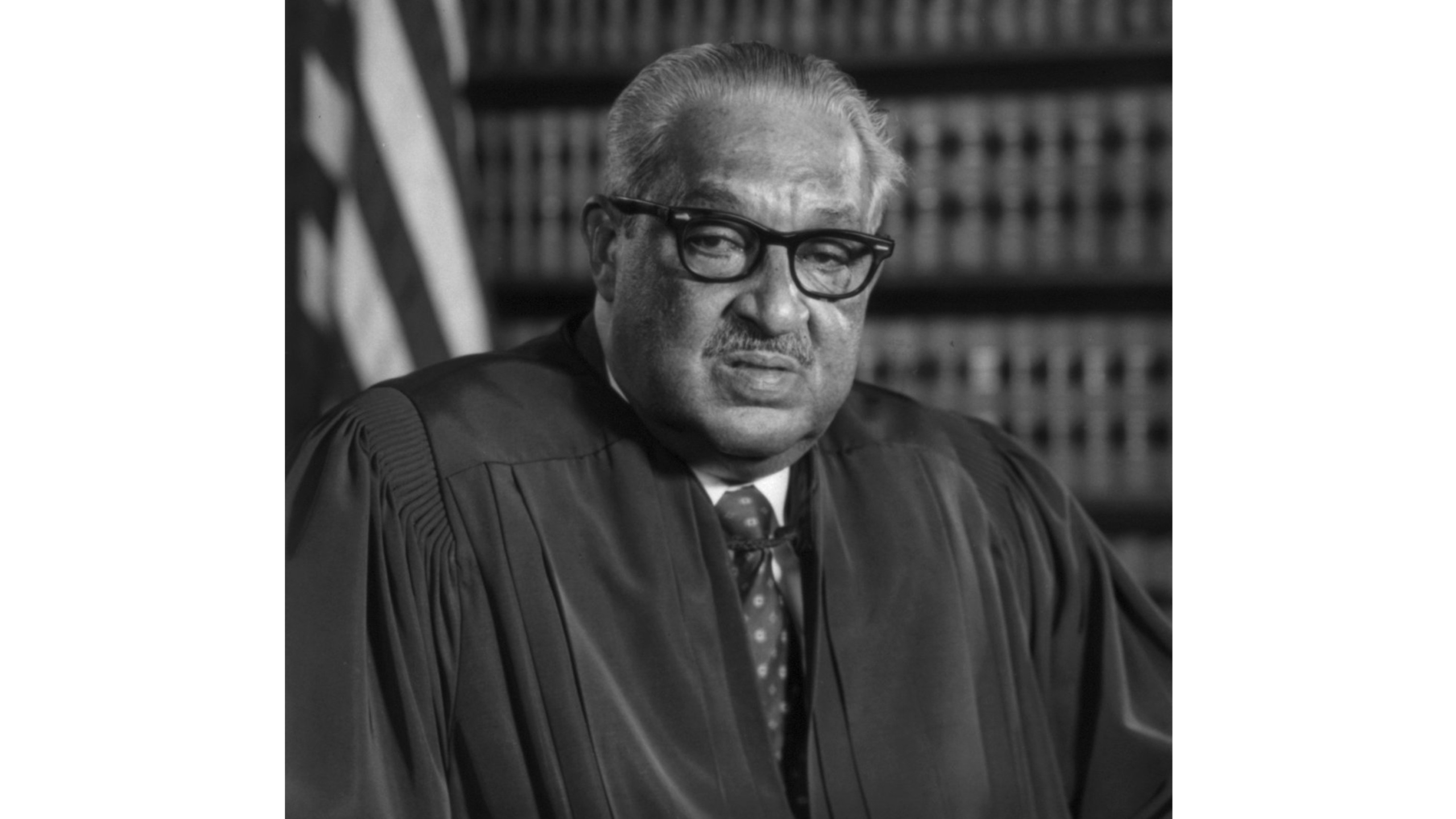In 2021, the Society is celebrating Black History Month every month, spending the year looking back at the impact of Black New Yorkers on the legal history of the state.
Though Hon. Thurgood Marshall was never a judge on the New York State courts, he spent much of his career in New York. In 1936, he became assistant special council for the National Association for the Advancement of Colored People (NAACP) in its New York offices. He later became the organization’s chief counsel. During this time, Justice Marshall represented the Brown family in the seminal case Brown v. the Board of Education, arguing before the U.S. Supreme Court that he would come to sit on, and winning a victory for integration in the school system.
A few years after the landmark decision, President John F. Kennedy appointed Justice Marshall to the U.S. Court of Appeals for the Second Circuit, and a few years after that, President Lyndon B. Johnson appointed Justice Marshall to the position of U.S. Solicitor General, becoming the first African American man to serve that role. President Johnson then nominated Justice Marshall to the U.S. Supreme Court in 1967, where Justice Marshall served until his retirement in 1991.
The Society has its own connection to Justice Marshall, having partnered with the Supreme Court Historical Society for a 2012 program that celebrated Justice Marshall’s pioneering role in the law and his civil rights activism. It featured a welcome from Hon. Jonathan Lippman, introductions from Hon. Sonia Sotomayor and Hon. Judith S. Kaye, a lecture from Prof. Randall L. Kennedy, and a conversation with Hon. George Bundy Smith. Watch now!
Catch up on the rest of our Every Month is Black History Month posts.

